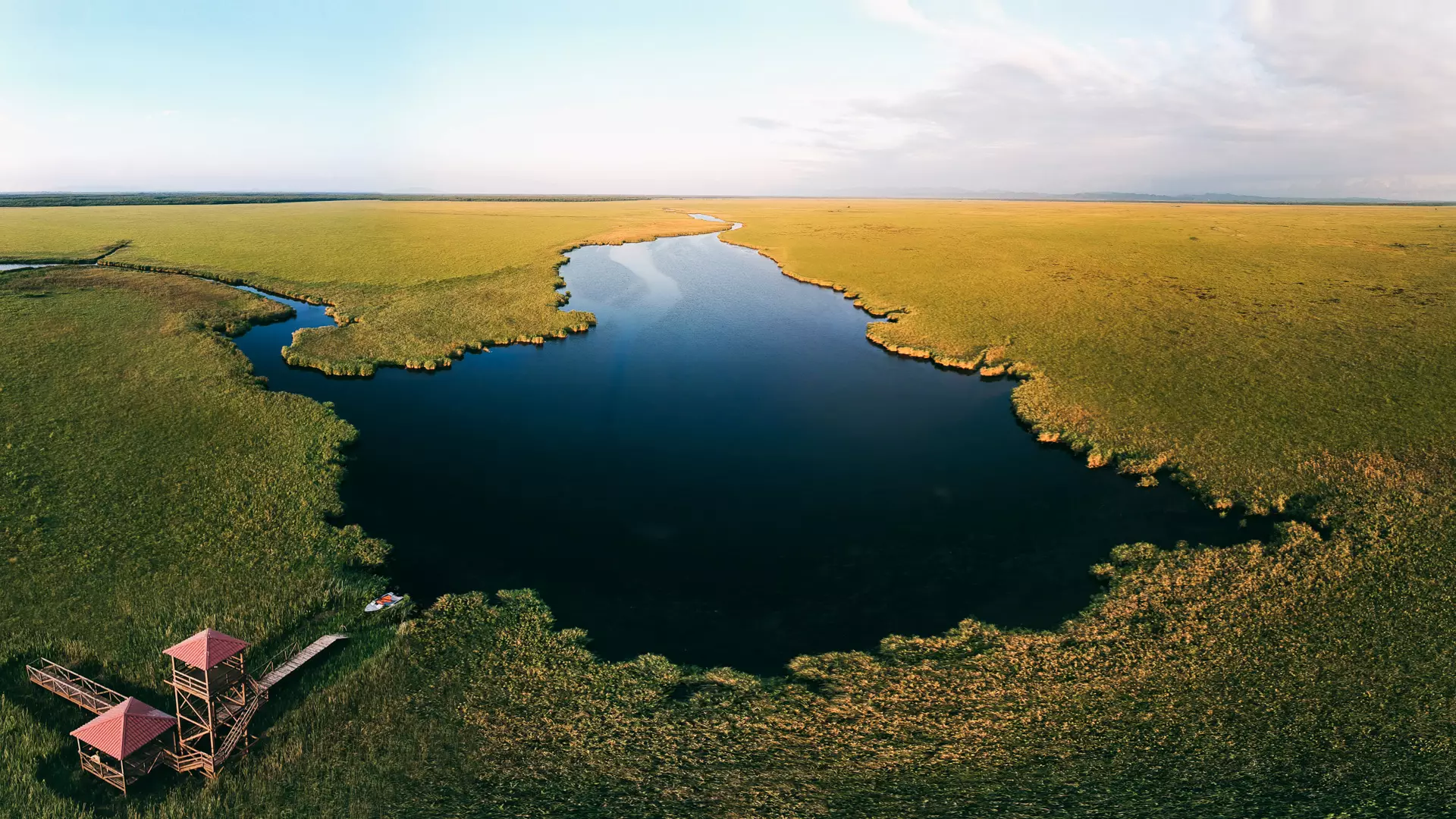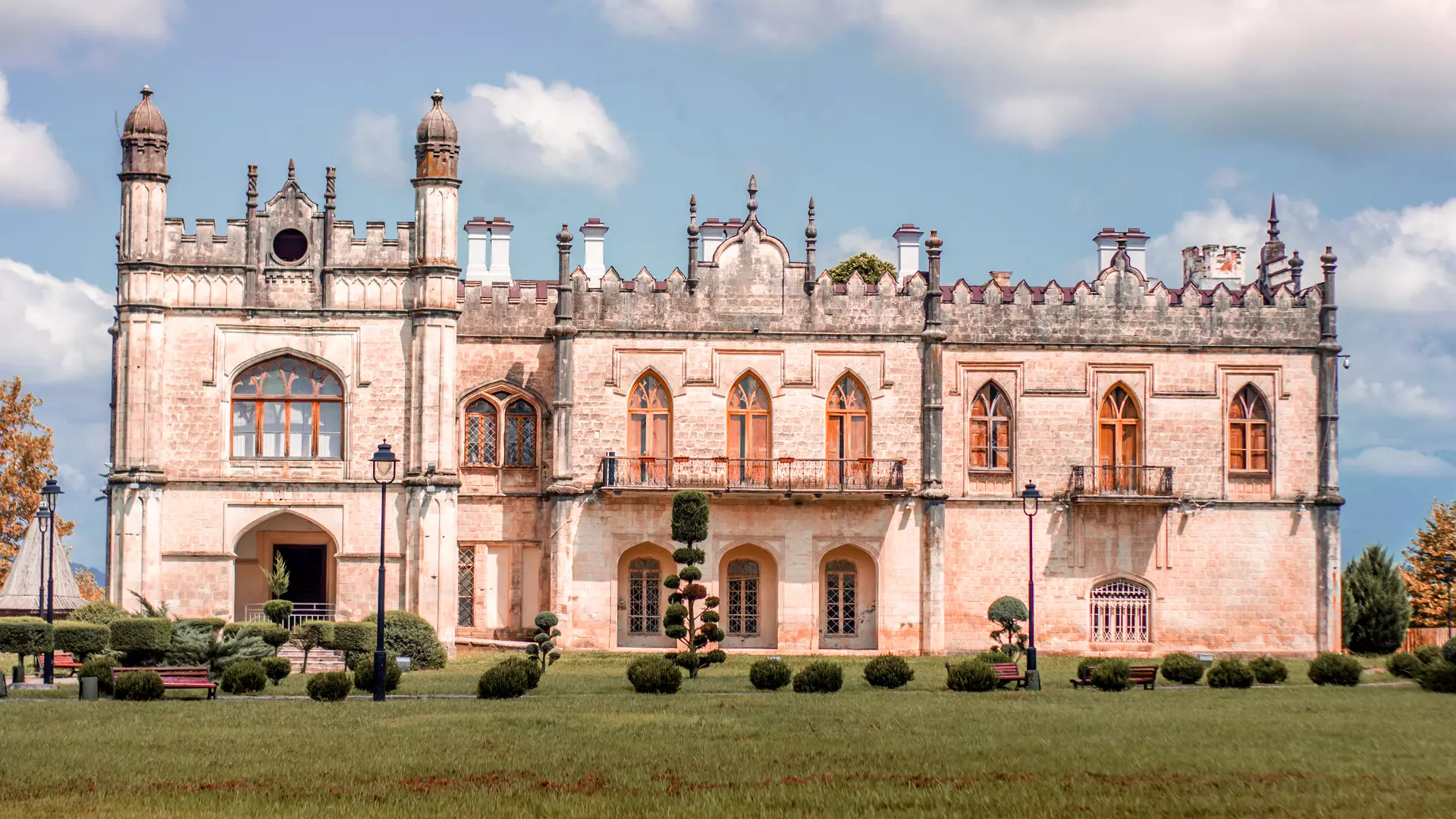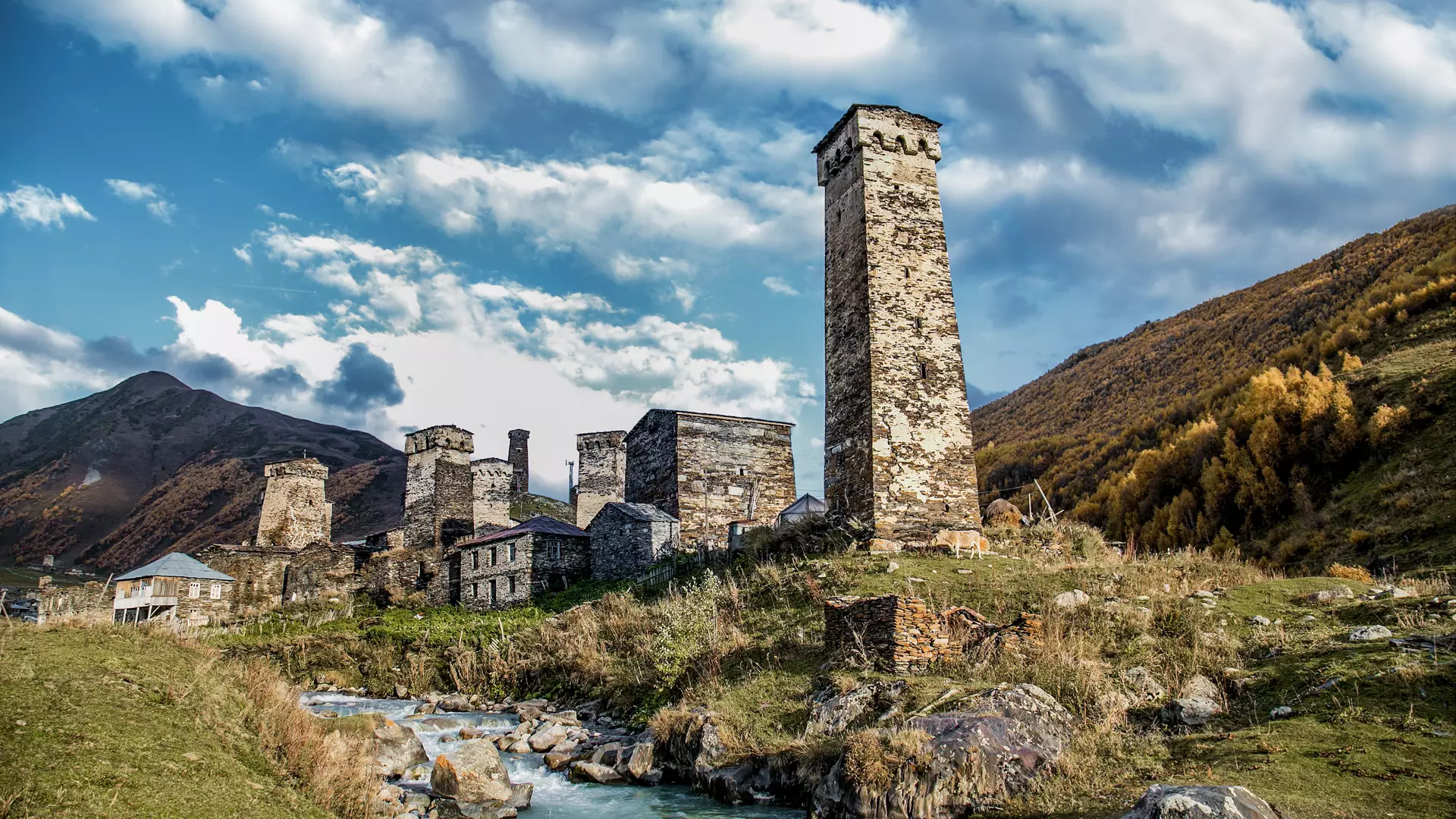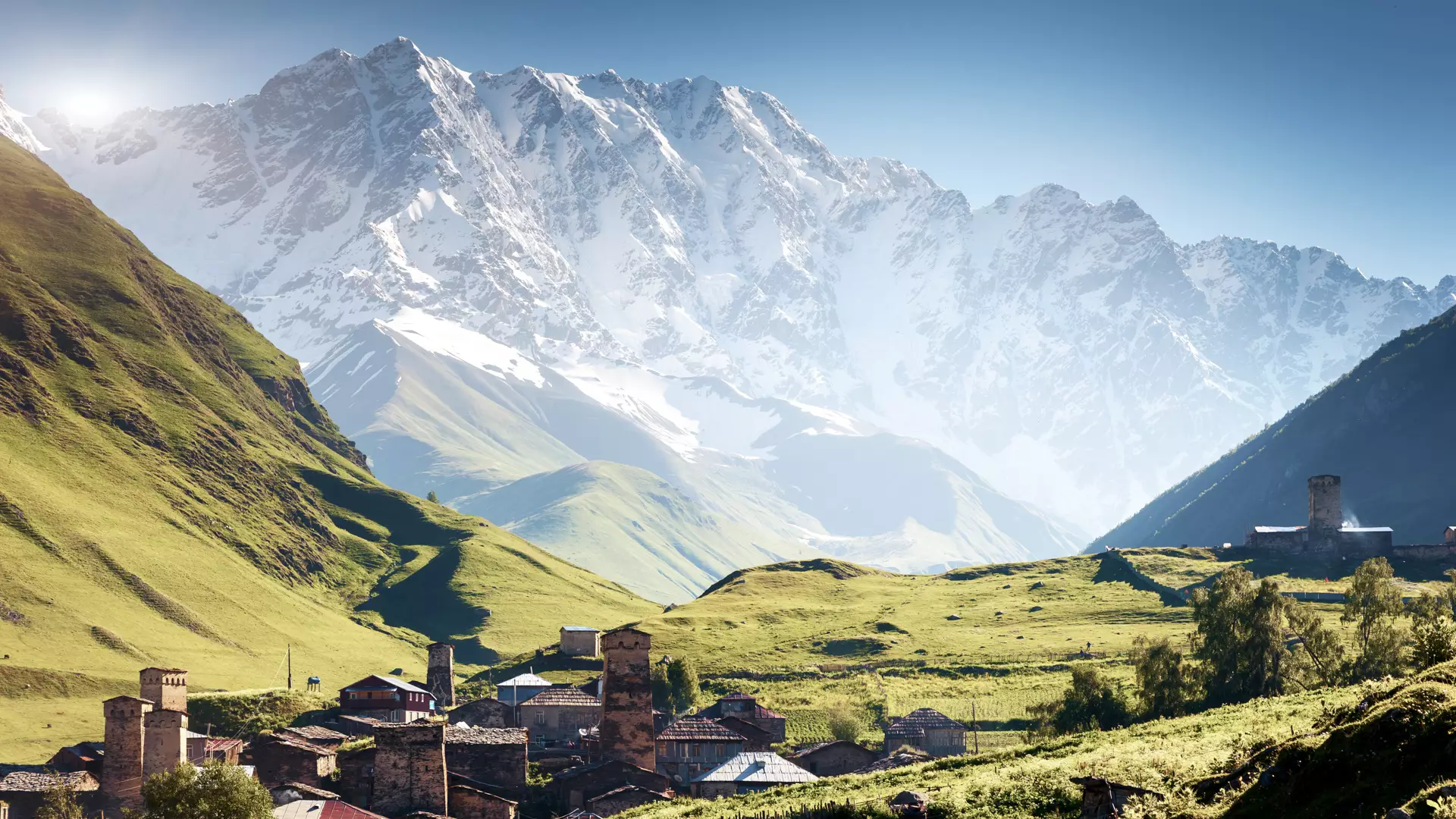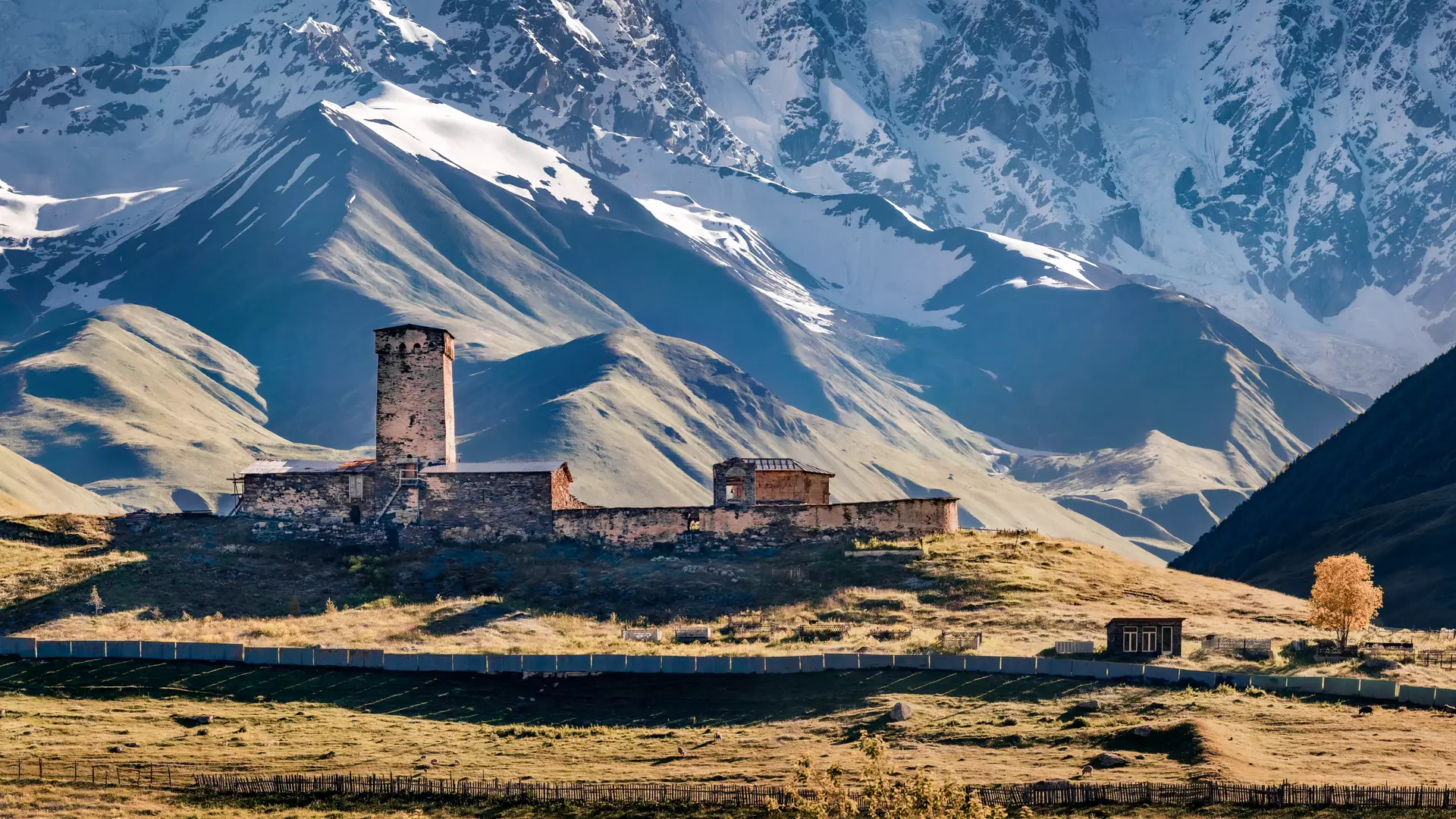Samegrelo-Zemo Svaneti
Samegrelo is situated between the Black Sea and the Rioni, Enguri, and Tskenistskali rivers in the central part of western Georgia. The region has a humid, subtropical climate, with primarily snowless winters, hot summers, mighty rivers, marshes, springs, and lakes.
The kingdom of Colchis existed in this area from the 6th to the 2nd centuries BCE. Colchis is associated with the myth of Jason and the Argonauts, as Greek mythology enthusiasts are already aware.
In the 1st century BCE, Colchis fell under Roman sovereignty. Later, it became a part of unified western and eastern Georgia.
It then became the Odishi Principality, which was proclaimed a protectorate of Russia in the 19th century, following which it became a part of an independent democratic country in 1918. Now, the area of Samegrelo is a part of the Samegrelo-Zemo Svaneti administrative unit and is comprised of Abasha, Martvili, Senaki, Chkhorotsku, Tsalenjikha, Khobi, and the port city of Poti.
Nature in Samegrelo
Begin the adventure at the Kolkheti National Park on the shores of the Black Sea, around Paliastomi Lake. You can take a boat, cutter, pontoon, or kayak to see the unique Kolkhetian forest and wetlands, which are now under UNESCO protection. From the observation towers, you can see as many as one hundred species of migratory birds.
The mountainous area of Samegrelo is amazing. Go up to Tsalenjikha, 2,650 meters above sea level on the Egrisi Range, to see the colorful lakes, where you will find the glacial Tobavarchkhili Lake and the waterfalls and small lakes of the Magana river.
Put the following natural monuments on your list of places to see: Kuakantsalia, a magically swaying, 12-ton boulder in Tsalenjikha; Katsoburi Managed Reserve; Intsra Valley; Oniore and Chkhomuri Waterfalls; Martvili and Balda Canyons.
If you’re searching for a vacation by the sea, then visit Anaklia and Maltakva
The Sights in Samegrelo
Many tourists start their journey through Samegrelo from the magical palace in Zugdidi, the main city of Samegrelo, which has been the calling card of the region since the 17th century. It was the residence of the famous princes of Samegrelo, the Dadianis. The palace is now a state museum, where exhibits of worldwide significance and religious relics are kept.
One of the most important sites of not only Samegrelo, but all of Georgia, is Nokalakevi, the capital of western Georgia from the 5th to 6th centuries CE.
The long history of Samegrelo encompasses many architectural monuments, such as Martvili Mother of God Church (7th century), Tsaishi Cathedral (10th-11th centuries), Kortskheli Virgin Church (17th century), Khobi Monastery (13th-14th centuries), Abedati Fortress (4th-6th centuries) and Church (9th century), Rukhi Fortress (17th century), Shkhepi Fortress (4th-16th centuries), and more.
The largest hydroelectric power station in the country, Engurhesi, is in Samegrelo. It is the most complex and magnificent structure of 20th-century Georgia. Here you can take a boat trip on the Enguri River and even have a tour inside this engineering marvel.
Zemo Svaneti
When it is snowing and flakes are flying all around, everything around you resembles a fine tapestry, and the towers, built of stones and boulders look like defenders of the mystical silence.
The road follows the Enguri River Valley from Samegrelo to Zemo Svaneti, which starts at the source of the Enguri River and ends at the border of Samegrelo.
The Nature in Zemo Svaneti
Zemo Svaneti is in Mestia Municipality, a high-mountain region and hotspot of tourism and alpinism, with alpine nature, clear lakes, the Enguri River and its rapid tributaries, and divine waterfalls.
The noble peaks of the Caucasus Mountains stand tall in Zemo Svaneti, such as Shkhara (5,203 m), Jangha (5,078 m), Gistola (4,860 m), Tetnuldi (4,852 m), Tsurungala (4,222 m), Ailama (4,547 m), Mazeri (4,012 m), Chatini (4,412 m), and Ushba (4,700 m).
An unforgettable winter awaits you at Mestia, Hatsvali, and Tetnuldi ski resorts. In the short summers, this place is magical, and you could not hope for a better place for hiking and other adventures.
The Sights in Zemo Svaneti
One of the major sights of Svaneti, and what gives it its ethnographic flavour is the Svan towers.
These giants, standing 20 to 25 meters high on a background of mountains reaching up for the sky, with their walls as thick as a meter and a half, have stood faithfully to protect the populace for centuries, holding back avalanches and enemies of any strength. The Svans lived with their families in four or five stories of the towers connected internally through wooden ladders, with the platform placed like a crown atop. The latter was used for combat purposes.
Svan towers are not the only treasure that makes this region of Georgia stand out. Start your tour in Svaneti at the Mestia Historical-Ethnographical Museum, which has a large collection of Svaneti treasures. The common place of worship of all Zemo Svaneti is in Mestia, at Seti St. George Church, where icons and crosses from the 12th to 13th centuries are kept. Visit the single-nave, two-story basilica Laghami Transfiguration of the Savior Church.
And finally, try outstanding Svan dishes, such as Kubdari and Kupati seasoned with unique Svan salt, the cheesy Mchadi called Chishvdari, Svan khachapuri, the local bread, honey, and the once-distilled Svan vodka called rakhi. You will understand that one lifetime is not enough to know Svaneti.
Cookie Policy


